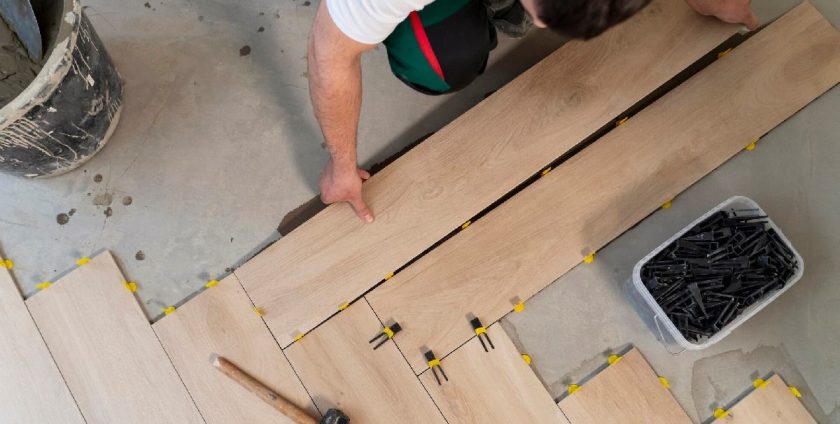
The basement is one of the trickiest areas in a home when it comes to timber floor installation. As you may already know, timber and moisture are natural enemies—and basements, by design, are highly prone to dampness. But that doesn’t mean you must relinquish your vision of warm, natural wood underfoot. With the right installation methods, moisture management strategies, and technical insight, basement timber flooring can be beautiful and long-lasting.
In this article, we’ll explain how to protect your timber floor installation in Melbourne from moisture damage during installation below ground level. Whether you’re working with engineered boards or solid timber, this guide will assist you in making informed decisions and avoid costly errors.
Why Basements Are More Susceptible to Moisture
Basements are naturally humid environments. As they are built below ground, they’re surrounded by soil, which holds moisture even during dry periods. Groundwater, vapour emissions through concrete, and lack of ventilation can all contribute to a persistently damp environment.
Moisture doesn’t just cause unsightly warping and cupping—it can also degrade adhesives, foster mould growth, and undermine the structural integrity of timber flooring.
1. Conduct a Professional Moisture Assessment
Before even considering installation, get a professional moisture test done. If the concrete subfloor has recently been poured, allow at least 4–6 weeks of curing before testing.
2. Choose the Right Timber Product
Solid timber is not usually recommended for below-grade installations due to its sensitivity to ambient moisture. Instead, opt for engineered timber flooring. Its cross-layered construction offers increased dimensional stability, making it less likely to warp or swell in humid environments.
Look for boards with a plywood or high-density fibreboard (HDF) core and a high-quality veneer top layer. Ensure the product has been rated for below-grade or high-humidity applications.
3. Moisture Barrier is Non-Negotiable
To prevent moisture transfer, you’ll need a reliable vapour barrier between the concrete and your floor for an effective timber floor installation. There are several options:
- Polyethylene sheets: Minimum 0.2 mm thick, laid with overlaps and taped at the seams.
- Liquid-applied moisture membranes: Products such as Ardex, Mapei, or Sika membranes offer excellent coverage and are applied directly to the slab.
- Combination underlays: These combine cushioning, acoustic control, and moisture protection in one layer.
Note: If you’re using underlays, they must comply with the relevant standards and be compatible with both your subfloor and adhesive system.
4. Use the Right Adhesive and Installation Method
If you’re going with a glue-down method, the choice of adhesive is critical. Use a moisture-resistant, flexible polyurethane adhesive designed for timber floor installation. Avoid water-based adhesives in basement settings—they may worsen moisture issues.
Alternatively, a floating floor installation may be more forgiving. Engineered boards can be installed as floating floors over the moisture barrier and acoustic underlay. This method avoids adhesives entirely and allows the timber to expand and contract more freely.
5. Acclimatise Timber Correctly
Even engineered timber needs to acclimatise to your basement’s conditions before installation. Leave the unopened packs of timber flooring in the basement for at least 72 hours to allow the material to acclimatise to the ambient humidity and temperature.
Avoid placing the packs directly on the floor—stack them off the ground with good airflow around each pack. This is especially important in spaces with minimal natural ventilation.
6. Maintain Environmental Controls
Once the floor is installed, maintaining a stable indoor environment is key. If your basement is naturally humid, consider installing a dehumidifier to keep relative humidity (RH) levels in check year-round.
Heating, Ventilation, and Air Conditioning (HVAC) systems can also help regulate moisture and temperature if the basement is part of a habitable area. Installing exhaust fans in any adjoining laundry or bathroom will help reduce airborne moisture.
7. Monitor After Installation
Even with careful planning and execution, ongoing monitoring is wise. A smart humidity sensor can provide real-time alerts if conditions in your basement begin to favour moisture build-up. Catching the issue early can save you from major repairs down the line.
We also recommend routinely checking your subfloor’s edges and corners, especially during the wetter months. Look for early signs of cupping, surface discolouration, or lifting edges.
Final Thoughts: It’s All in the Preparation
Timber floors in basements can be a beautiful and long-lasting option,but only if moisture control is addressed from the start. The right product, proper subfloor preparation, and expert installation can prevent the majority of problems before they occur.
At Croydon Floors, we understand the complexities of working in below-grade environments. Our team brings the technical know-how and premium materials to ensure your timber flooring looks stunning and performs flawlessly for years to come.
Ready to Transform Your Basement?
Contact Croydon Floors today for tailored advice, professional timber floor installation, and premium engineered timber solutions designed to thrive in challenging environments like basements. We bring years of experience and technical expertise to every project.
Let’s make your basement flooring project a success—start with a no-obligation consultation today.
- By: Croydon Floors
- Category: Uncategorised
- 0 comment
